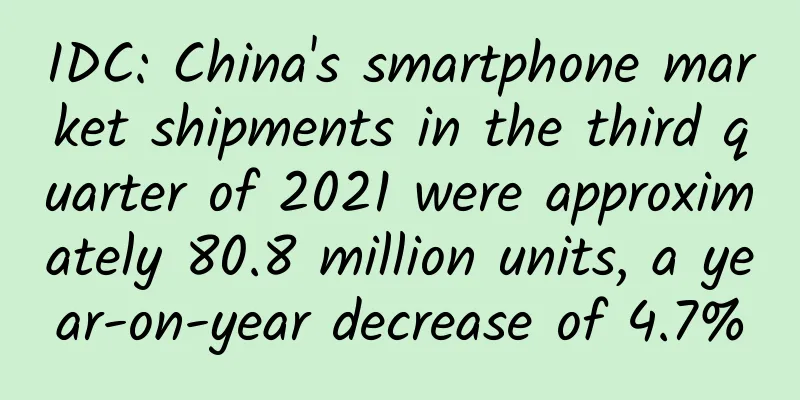IDC: China's smartphone market shipments in the third quarter of 2021 were approximately 80.8 million units, a year-on-year decrease of 4.7%

|
Recently, as 5G in the Chinese market officially entered its second anniversary of commercial use, 5G terminals have completely become the mainstream in the domestic market. In the third quarter of 2021, 5G smartphones accounted for 77.0% of the overall market shipments, but it is worth mentioning that the share of domestic 4G smartphone shipments this quarter rebounded for the first time in nearly two years. The reason for this is that, on the one hand, Huawei was forced to turn to 4G products under the influence of force majeure; on the other hand, the market demand for entry-level 4G products from other leading manufacturers still shows clear continuity, including the launch of several new 4G products in the domestic market in the second half of the year. |
<<: Here are the top 10 hot questions and answers for current epidemic prevention
>>: CounterPoint: Chinese brands accounted for 65% of the Colombian smartphone market in Q2 2021
Recommend
Will uterine prolapse affect pregnancy?
Uterine prolapse is one of the common diseases am...
What is the difference between cervical plug mucus and leucorrhea
Cervical mucus and leucorrhea are both manifestat...
Calcium tablets that pregnant women can take
Calcium tablets are a very familiar nutritional h...
What items should be checked during amniocentesis? You must know
Prenatal examinations are very important for preg...
35 weeks pregnant, stomach pain like menstrual pain, what is going on
The 35th week of pregnancy means that the woman h...
Comparison of tampons and sanitary napkins
Tampons and sanitary napkins are both products th...
What anti-inflammatory medicine is good for gynecological inflammation?
Gynecological inflammation is a common disease am...
Safe period leucorrhea drawing
I don’t know if female friends are clear about ho...
Elevated transaminases during pregnancy
Women's transaminase will change during pregn...
What to do if you have a cough during breastfeeding
The lactation period is a crucial period for wome...
Is contraceptive ring harmful to the body?
Contraceptive IUDs are harmful to the body, mainl...
What prenatal examinations are needed in three months?
You can take your first maternity leave at three ...
Can the thermos cup be used for a long time? What should I do if the paint of the thermos cup falls off?
Thermos cups are commonly used water containers i...
How long after taking Minocycline can I have a baby?
In daily life, we are often confused by many symp...
What are the causes of constipation? How to treat constipation
Many people in life are troubled by constipation....









